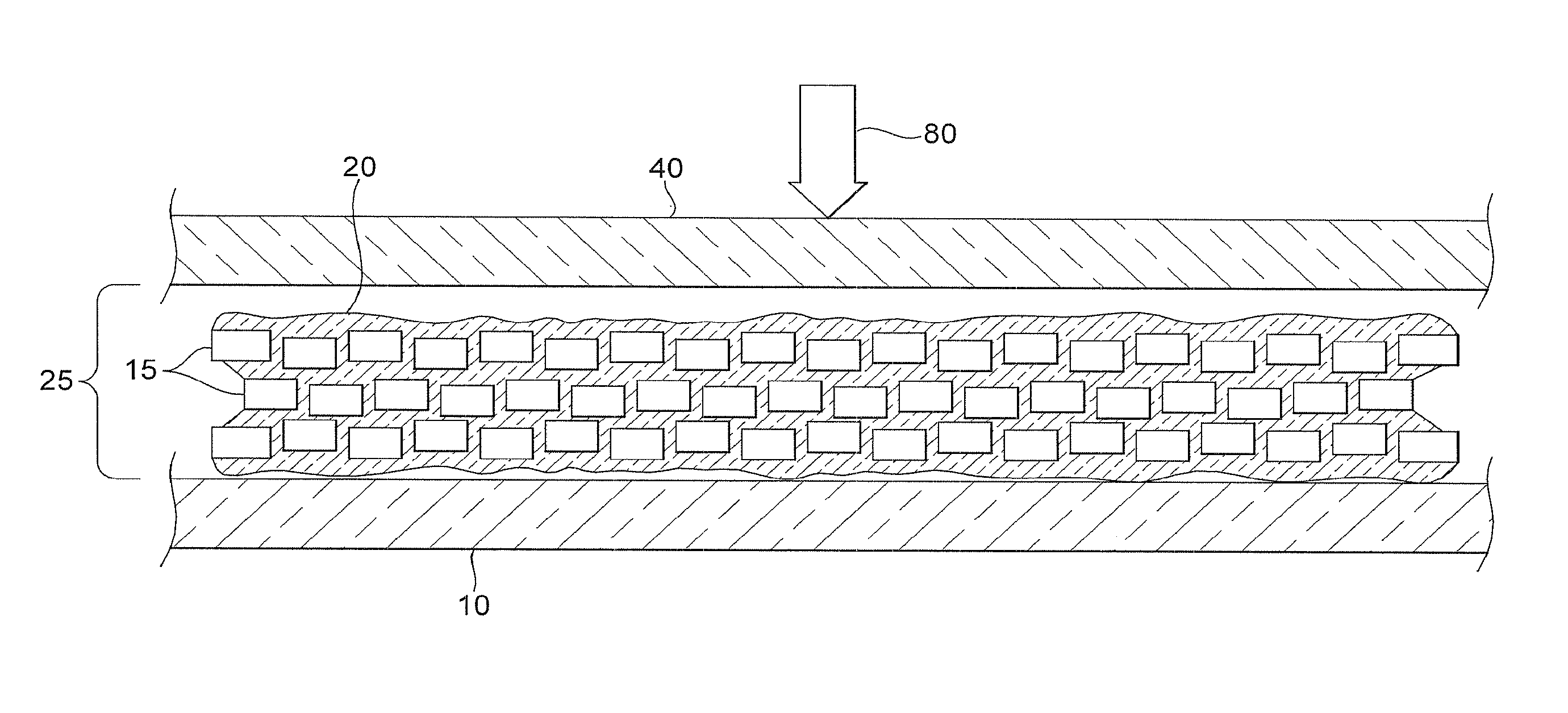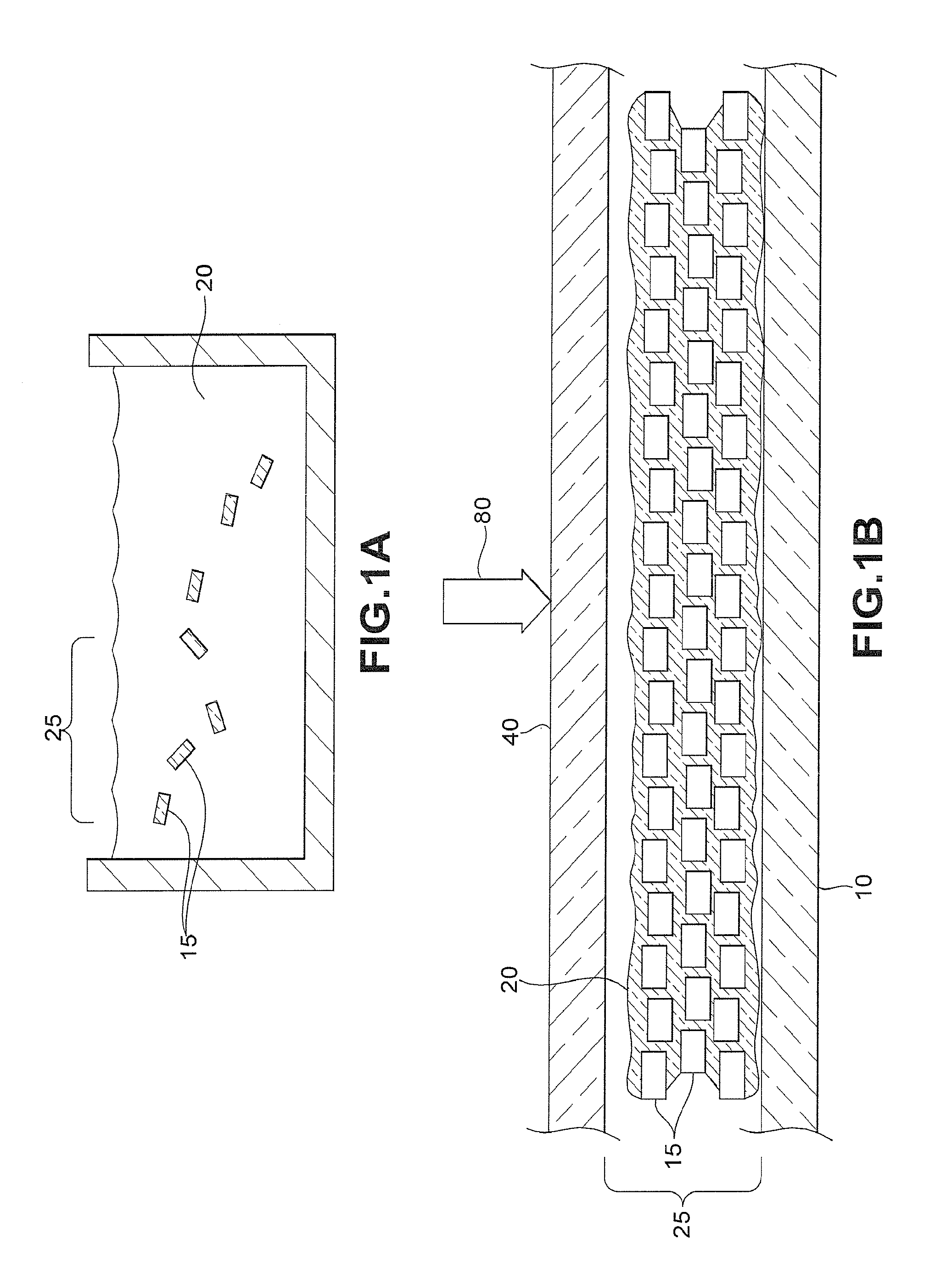Hermetically sealed electronic device using coated glass flakes
a technology of glass flakes and electronic devices, applied in the field of glass flake based hybrid hermetic sealing systems, can solve the problems of lack of adequate hermeticity, unable to achieve the point of adequate hermeticity for some of the most demanding applications, and the -der-waals bonding is more susceptible to gaseous diffusion, so as to simplify the manufacture of hermetic seals
- Summary
- Abstract
- Description
- Claims
- Application Information
AI Technical Summary
Benefits of technology
Problems solved by technology
Method used
Image
Examples
Embodiment Construction
[0024]The primary purpose of this invention is the formation of hybrid hermetic seals, defined as seals containing both organic and inorganic components. While organic sealants are inherently permeable to gasses and vapors, over the years their permeabilities have been reduced by orders of magnitude by optimizing their formulations, additives, processing techniques, and curing techniques. Still these optimized systems have permeabilities at least two orders of magnitude too high to satisfy the idealized level of hermeticity required for some of the more demanding applications.
[0025]The seals and materials of the invention can be used to form, in general, moisture barriers, hermetic seals, and gaskets. The moisture barriers are useful in protecting electric and electronic devices such as solar cells and solar cell modules. Moisture barriers are especially useful in protecting flexible devices or an array of devices when the array is flexible. Hermetic seals are suited to form sealed ...
PUM
| Property | Measurement | Unit |
|---|---|---|
| aspect ratio | aaaaa | aaaaa |
| D50 particle size | aaaaa | aaaaa |
| temperatures | aaaaa | aaaaa |
Abstract
Description
Claims
Application Information
 Login to View More
Login to View More - R&D
- Intellectual Property
- Life Sciences
- Materials
- Tech Scout
- Unparalleled Data Quality
- Higher Quality Content
- 60% Fewer Hallucinations
Browse by: Latest US Patents, China's latest patents, Technical Efficacy Thesaurus, Application Domain, Technology Topic, Popular Technical Reports.
© 2025 PatSnap. All rights reserved.Legal|Privacy policy|Modern Slavery Act Transparency Statement|Sitemap|About US| Contact US: help@patsnap.com



